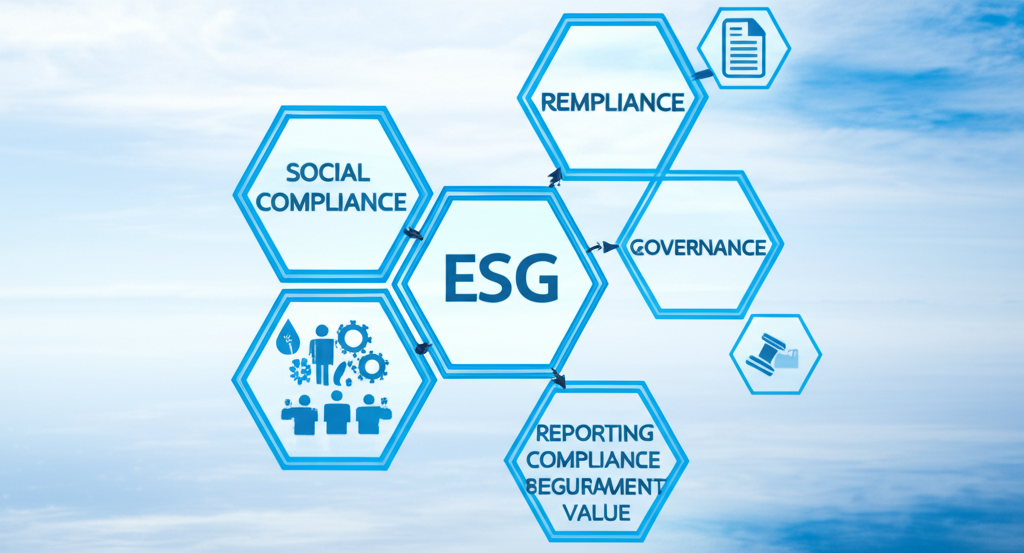Regulatory Compliance: Navigating SEC Disclosure Requirements

Table of Contents
For public companies, navigating SEC disclosure requirements is both a compliance necessity and a strategic communication opportunity. Understanding how to meet regulatory obligations while effectively telling your company's story is a core competency for IR professionals.
GetFeatured's regulatory specialists continuously monitor these evolving requirements, helping our clients stay ahead of disclosure trends and regulatory expectations. Our Pulse Compliance module provides real-time alerts on regulatory changes that may impact your disclosure obligations.
The Evolving Disclosure Landscape
The Securities and Exchange Commission's disclosure framework continues to evolve in response to market developments, investor demands, and changing business realities. Recent years have seen significant updates to disclosure requirements around human capital, cybersecurity, climate risk, and board diversity, reflecting the expanding definition of material information.
Core SEC Disclosure Requirements
Periodic Reports
The foundation of public company disclosure includes:
- Form 10-K (Annual Report): Comprehensive overview of the company's business, risks, financial condition, and results of operations
- Form 10-Q (Quarterly Report): Unaudited financial statements and overview of the company's financial position for the quarter
- Form 8-K (Current Report): Timely disclosure of material events between periodic reports
Proxy Materials
Annual meeting materials include:
- Proxy Statement: Information on matters to be voted on, director nominees, executive compensation, and corporate governance
- Annual Meeting Materials: Supporting documents for shareholder meetings
Securities Offerings
When raising capital:
- Registration Statements: Detailed disclosures for new securities offerings
- Prospectuses: Information documents provided to potential investors
Insider Activity
Tracking insider ownership:
- Forms 3, 4, and 5: Reports of beneficial ownership and changes in ownership by insiders
- Schedule 13D/G: Disclosures by significant shareholders
Strategic Approaches to Disclosure Compliance
1. Materiality Assessment
At the heart of effective disclosure is a robust process for determining materiality:
- Establish clear criteria for assessing materiality that align with SEC guidance
- Implement a cross-functional materiality review process
- Document materiality decisions and rationales
- Regularly reassess materiality thresholds as the business evolves
2. Disclosure Controls and Procedures
Robust processes ensure accurate and timely disclosures:
- Develop comprehensive disclosure policies and procedures
- Establish a disclosure committee with clear responsibilities
- Create information gathering systems that capture relevant data across the organization
- Implement multiple levels of review and verification
- Conduct regular testing and assessment of disclosure controls
GetFeatured's disclosure management services help companies implement robust controls and procedures that ensure accurate, timely, and compliant disclosures. Our team of former SEC attorneys and IR professionals brings decades of experience to the development and testing of disclosure controls.
3. Plain English Principles
SEC rules require the use of plain English in certain disclosures:
- Use short, clear sentences with active voice
- Avoid legal jargon, technical terms, and complex business concepts without explanation
- Organize information in a logical, accessible manner
- Use tables, bullet points, and headings to enhance readability
- Eliminate redundancies and unnecessary details
4. Consistent Messaging
Ensure alignment across all disclosure channels:
- Coordinate messaging across SEC filings, press releases, investor presentations, and earnings calls
- Develop a central repository of approved disclosure language for key topics
- Implement review processes that compare new disclosures against previous statements
- Train executives and spokespersons on disclosure obligations and messaging consistency
- Monitor social media and other informal communications for potential disclosure issues
5. Forward-Looking Information
When providing future-oriented information:
- Clearly identify forward-looking statements
- Include appropriate cautionary language (safe harbor statements)
- Ensure projections have reasonable basis and are presented fairly
- Update or correct previous forward-looking statements when necessary
- Document the basis for forward-looking information
Emerging Disclosure Areas
ESG and Sustainability
Environmental, social, and governance disclosures are increasingly important:
- Monitor evolving SEC requirements for climate and ESG disclosures
- Consider voluntary frameworks (SASB, TCFD, GRI) while awaiting final SEC rules
- Ensure ESG disclosures are subject to the same controls as financial information
- Align sustainability reporting with SEC filings
- Prepare for increased scrutiny of ESG claims and metrics
Cybersecurity
Cyber risk disclosure requirements continue to expand:
- Develop processes for assessing materiality of cybersecurity incidents
- Create disclosure protocols for material cyber events
- Provide meaningful disclosure about cybersecurity risk management
- Consider board oversight of cybersecurity disclosures
Human Capital Management
Recent rules require enhanced human capital disclosures:
- Identify human capital metrics material to your business
- Develop consistent approaches to workforce data collection and reporting
- Consider industry-specific human capital factors
- Prepare for potential expanded disclosure requirements
Best Practices for IR Professionals
Building a Disclosure Calendar
Proactive planning is essential:
- Create a comprehensive calendar of required filings and typical voluntary disclosures
- Build in adequate time for information gathering, drafting, review, and approval
- Coordinate disclosure timing with other corporate events and communications
- Establish clear ownership and accountability for each disclosure element
Leveraging Technology
Modern tools can enhance disclosure processes:
- Implement disclosure management software to streamline filing preparation
- Use data analytics to identify disclosure trends and peer comparisons
- Consider AI tools for consistency checking and plain English improvements
- Develop dashboards to track disclosure obligations and deadlines
Continuous Improvement
Refine your approach over time:
- Conduct post-filing reviews to identify improvement opportunities
- Solicit feedback from investors on disclosure clarity and usefulness
- Monitor peer disclosures for emerging best practices
- Stay current on regulatory developments and enforcement actions
Conclusion
Effective navigation of SEC disclosure requirements requires both technical compliance expertise and strategic communication skills. By developing robust processes, embracing plain English principles, ensuring consistent messaging, and staying ahead of emerging disclosure areas, IR professionals can transform regulatory compliance from a burden into a strategic advantage.
The most successful companies view disclosure not merely as a compliance exercise but as an opportunity to build trust, enhance transparency, and effectively communicate their value proposition to investors and other stakeholders.
How GetFeatured Can Help
GetFeatured's Pulse platform includes advanced compliance monitoring tools that help you stay ahead of regulatory changes. Our team of disclosure specialists can help you develop and implement disclosure controls and procedures that ensure compliance while effectively communicating your company's story.


